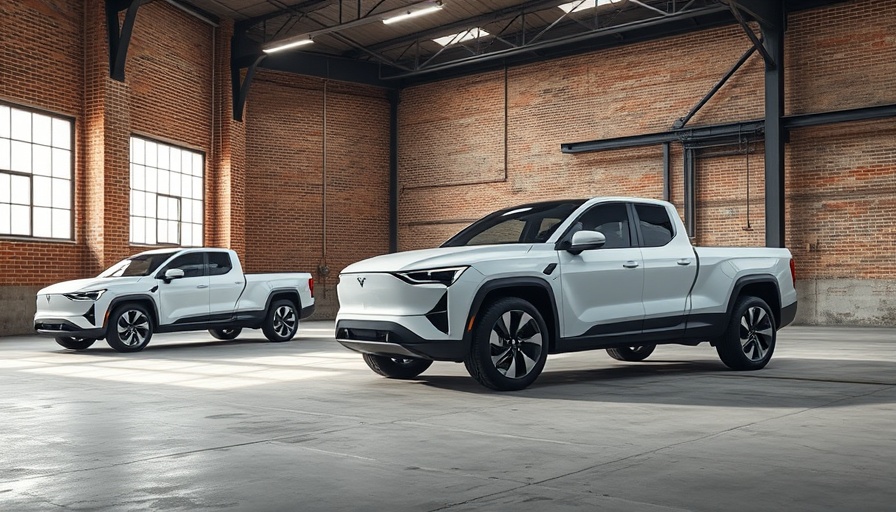
Slate’s Entry into the EV Market: A Game-Changer?
A new name is making waves in the electric vehicle (EV) sector. Introducing Slate, a little-known startup that has recently received a staggering 100,000 reservations for its electric pickup truck within just two weeks of its unveiling. What’s particularly remarkable is that this truck is priced under $20,000 after federal incentives, making it one of the most affordable options currently available. In a market saturated with electric pickups often exceeding the $50,000 mark, Slate's ultra-affordable offering has ignited considerable excitement.
Affordability Meets Practicality
The Slate electric truck sets itself apart from traditional EVs by adopting a no-frills approach. Its design focuses on modularity, with plastic body panels and minimal construction—a style reminiscent of practical vehicles that prioritize functionality over luxury. This choice ensures that potential buyers can customize their experience; even features as standard as speakers are optional. This affordability-first philosophy might just resonate with a significant segment of consumers tired of the premium-priced offerings dominating the marketplace.
The Reservation Phenomenon: A Double-Edged Sword
While excitement about the 100,000 reservations is palpable, industry observers remain cautious. Of the initial $50 reservation fee, about $5 million was raised, but the full refundable nature of the deposit leads to questions regarding actual sales conversion. For instance, Tesla’s Cybertruck witnessed over two million reservations at its peak, yet many orders did not culminate in sales as inventory continued to swell. Hence, Slate must now pivot from being a buzz-generating startup to a widely accepted manufacturer—all within an industry known for rapid shifts.
Backing and Scalability: A Promising Future?
What adds weight to Slate’s endeavor is its financial backing, including a private firm linked to Jeff Bezos. This sponsorship, alongside a lean manufacturing plan, positions Slate with an ambitious production target of 150,000 vehicles per year by 2027, right from its Indiana facility. Unlike many newcomers in the auto sector, Slate isn’t merely interested in creating hype; the company is strategically planning its growth.
Where Do EVs Go From Here?
Slate's emergence points towards a possible shift in the broader EV conversation. For years, the spotlight has been on premium features and extended ranges, but Slate’s model offers a reflection of a shift back to simpler, more affordable vehicles that meet the basic needs of consumers. With advancements in battery technology promising improvements in cost and operational efficiency, Slate's timings might be right to fill a crucial gap in the current market.
Challenges on the Horizon
Despite its promising start, Slate's journey is not without obstacles. The electric vehicle landscape has seen several start-ups that initially generated significant excitement but failed to deliver. To succeed, Slate must ensure its production meets consumer demand while maintaining quality control—a hurdle faced by many in the auto industry.
Conclusion: The Affordable EV Landscape Awaits
If Slate succeeds in converting its 100,000 reservations into tangible sales and production, it could signal the beginning of a significant shift in the automotive landscape. As consumers seek practicality in their vehicle choices, Slate might just be the start of a new trend toward affordable electric pickups that cater to the broad masses rather than just the affluent segments.
 Add Row
Add Row  Add
Add 




 Add Row
Add Row  Add
Add 

Write A Comment